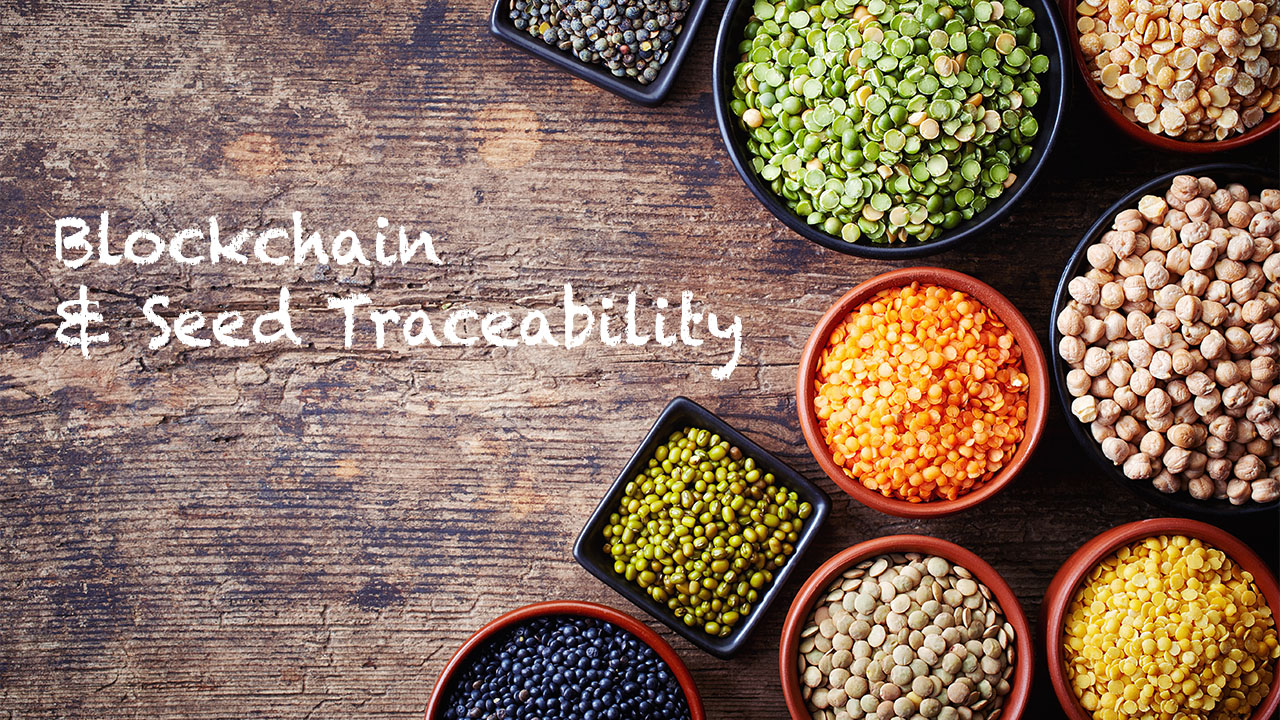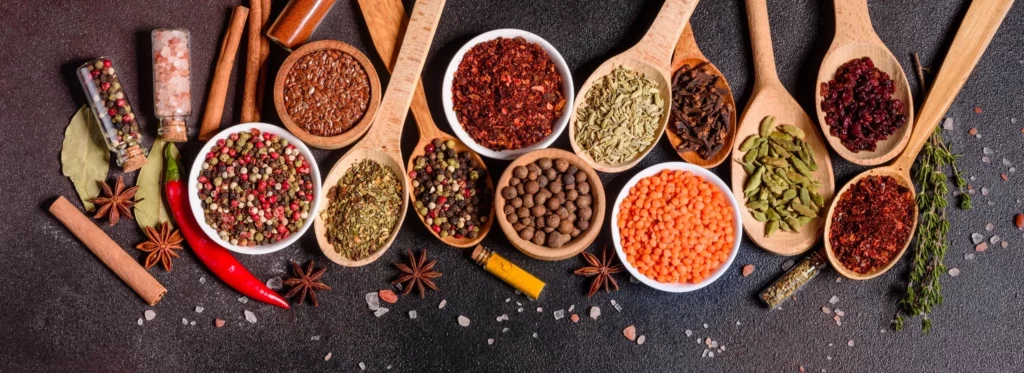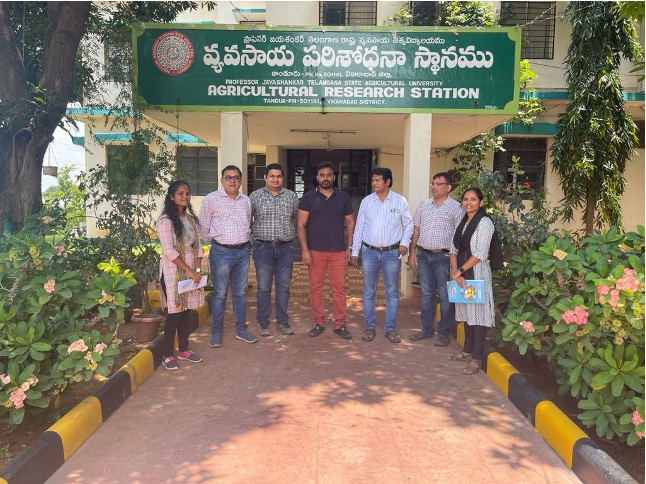Solution
With digitization and traceability in the seed industry, there will be full-proof evidence of the quality, which will, in turn, lead to higher prices, meaning better earnings for the farmers. PJTSAU (Professor Jayashankar Telangana State Agricultural University), in collaboration with TRST01 (Trust O One), has introduced blockchain technology in the field of agriculture (Seed traceability on Pigeonpea & Safflower) for the benefit of the farming community. This will enable farmers to get authenticated information regarding the products (Seed & Dal) they purchase from the seed-producing agencies, not to be eluded by spurious seeds available in the market.TRST01 Blockchain platform performs a complete source trace of the product from Nucleus seed to Certified seed. All the data will be recorded and stored in the blockchain. TRST01 platform generates a unique hash and integrated QR codes for the seed.
About The Brand
The seed produced by the Team of Scientists at ARS, Tandur, PJTSAU is well known for its good quality. The seed is produced following all the standards of IMSCS (Indian Minimum Seed Certification Standards) and monitored by TSSOCA Team (Telangana State Seed Certification Agency) at various stages from sowing to harvesting.
The unique QR code generated by TRST01 for Redgram and Safflower Seed made the products developed by Research Station to the era of digitalization.
Need For Blockchain
Blockchain enables the Trace of the products, which helps the consumer know complete information about seed source, Geolocation from where the seed is produced, farmer details, a package of practices followed to raise the crop, seed processing, monitoring by scientific teams, and finally packaging.

Blockchain and Seed Traceability
28 Dec 2021 , Blockchain, Traceability, Supply chain
Introduction
Blockchain seed traceability is growing momentum in the global agriculture-seed sector due to its high potential to provide an entire history of the product status, improved customer trust and loyalty, fairer payments, authorized vendors, and proper compliance management. With traceability, consumers can know details about a product they consider buying, such as origin, producer, ingredient, how the product was made or grown, etc. Traceability helps consumers have a comprehensive knowledge of the products they will buy. Then, they can answer whether the products are safe, friendly to their health and environment.

Problem Statement
In recent years, it has been observed some farmers have lost their crops, even their lives, because of low-quality seeds. The source of these seeds and their trustworthiness is highly unknown. Healthier crops start from healthy seeds and lead to good crops. When the farmers have access to high-quality, strong, and disease and pest-resistant seeds, the quality can make a huge difference, thus improving crop health and also its value. Low and spurious quality seeds, which cannot be traced directly, impact farmers’ income. It is primarily because the agri-companies are not sure of the seed source.
As there exist several varieties in each crop, the characteristics of particular varieties are standardized, which ensures using traceability by their unique traits.


Benefits
Digital Interventions will help achieve symmetrical information flow across the seed value chain and help critical value chain stakeholders leverage on data and derive demand-driven strategies. It will also strengthen seed exports to developed countries by ensuring conformity with seed quality and improved efficiency. Furthermore, such a network of digital systems will bring transparency, significantly reducing malpractices and seed quality adulteration, one of the most prevalent issues in the seed industry.
In this system, information is decentralized and stored at every supply point, where the farmer can digitally trace the origin of seeds and the movement to distributors and retailers. With this digitization and traceability, there will be full-proof evidence of the quality of seed, which will help farmers claim fair prices for their produce and avoid being cheated.
Current Trends in Seed Traceability and The Future
Technology in agriculture is continuously evolving. Traceability empowers the consumers and agri-companies to trace the history of origin, handling, and other steps involved in the packaging of the seed. Certified products have started gaining momentum, as today’s consumer is aware. Anyone who can afford food wants to be well-informed and learn everything about what they consume. Tracking the pedigree of seed planted to verify the origin of seed is the starting point and has helped Agri companies maintain trust and transparency.
A senior official of the Ministry of Agriculture said that India is sufficiently producing 3.80 million tonnes of seeds for the requirement of 3.50 million tonnes and is exporting the surplus. Recently, many such scams have surfaced where the state agriculture department has received thousands of complaints from farmers whose seeds have reportedly failed to germinate. The ruling courts then made the seed production companies liable to legal action and ensured replacing the seeds for the farmers.
This lag in supply and demand is due to poor monitoring over the chain of custody of the seed value chain. Once standardized processes with digital interventions are in place, the chances of error dramatically drop. The erratic quality will be confined and result in the overall symmetry of quality, type, and expected output for the agricultural industry.

Conclusion
Traceability empowers not only the consumers but also Agri-companies to trace the journey of the seed. Tracking the pedigree of the seed has helped Agri companies maintain trust and transparency, and the generated QR code allows any interested party to trace all production parameters on certification. Digitization is one such solution that holds immense potential for traceability in the seed industry. It broadly involves capturing, structuring, and transmitting adequate information concerning the origin of the seed, parental lines of crops, phytosanitary treatments and protocols followed across the production process, and various handling steps involved in seed processing and marketing across the supply chain.
By P Rajeshwari and Arpana Paul Management Trainee TRST01
Write to us journey@trst01.com
Share Blog on: